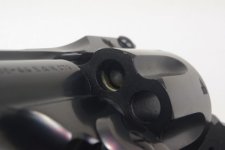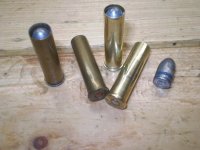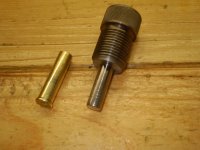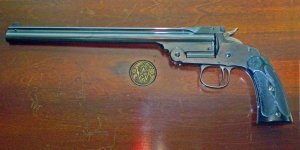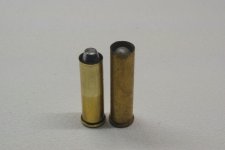OP
Oldmanwesson
Member
I use the Lee scoops all the time but I use them to throw a charge that is light by a few 10th's, then I trickle up to the desired weight. The scoops are consistent enough to replicate factory "plinking" ammo but not (in my opinion) repeatable enough for min/max charges.
There are some great suggestions above. One thing I will add to the question of low volume charges is that you can take up some of this space to prevent erratic ignition. One common method is to stuff a pinch of Dacron pillow wadding over the powder charge to hold it against the flash hole when firing.
I thought of doing that. I've heard that if the powder is too far forward of the flash hole it may not ignite properly (which I think happened to one of mine). One other thing I noticed with the length of the cartridge case is that the original 38-44 case was based on the early 1 7/16 cylinder but when S&W changed the length to 1 9/16 the ammo stayed the same. So, in the later revolvers the rim of the cartridge is about 1/8 inch back from the front of the cylinder. My .357 magnum cartridges are also about 1/8 shy of the front of the 1 7/16 cylinder. The gap should therefore not be a problem. Should work fine, then. I got my powder scale and my custom made measure is actually bang-on. Exactly 3.8gr of powder as suggested by Alliant's loading tables. Here is a picture of an original 38-44 cartridge in the 1 9/16 cylinder of my other, pristine 38-44 which I will NEVER shoot...

